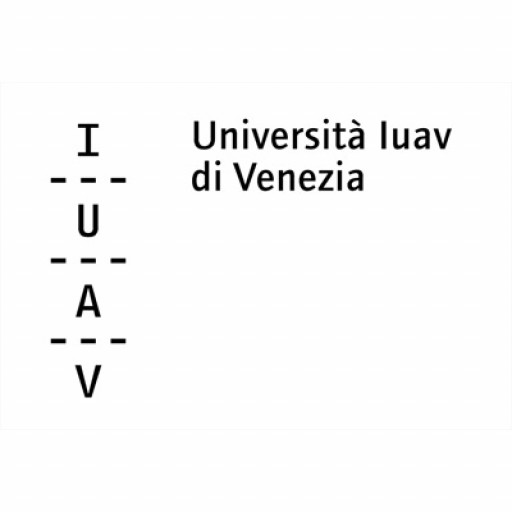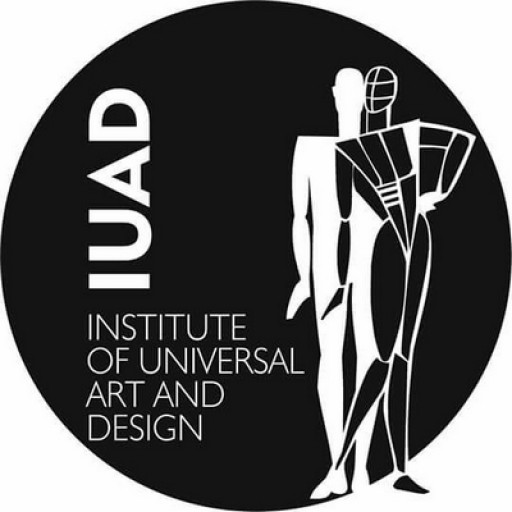“A core-curriculum (at the university) should, I am persuaded, contain an introduction to architecture. It should be on the center of the programme. Architecture draws on mathematics, geology, the material sciences. But also in sociology, aesthetics, and every fact of environmental politics. It embodies history and futurity. In architecture, the notorious gap between ‘the two cultures’ (humanities and sciences) is wholly abolished. Archimedes conjoins with Michelangelo. They teach us how ‘to read’ a building.”
George Steiner, ‘Universitas’, Nexus Instituut, Tilburg 2013
The architectural content of the liberal education, in the pre-professional program at UVA, synthesizes the ambition of educating open minds, responsible citizens, innovative explorers and cultivated intellects. The pre-professional program focuses in architecture as the critical step towards a high level architectural practice, but also as the holistic education described by Steiner that prepares the student for intellectual and ethical success in any possible direction of his or her professional life.
The four years pre-professional degree at the University of Virginia rounds the education of an architect with the addition of liberal arts and other fields content to the core architectural curriculum. With the Bachelor of Science Architecture, our graduates receive advance placement in the professional Masters degree program, a typical 4+2 years education sequence. Our graduates also have the added value of professional work experience in between the two degrees as well as typically the added experience of education in two different institutions. The opportunity for professional practice after the undergraduate degree fosters maturation and certainty about the direction of the professional life, and the choice of a different institution often adds an entire new dimension to a student’s educational experience.
Additionally, the architectural content of the UVA B.S. Arch. degree is taught be the same faculty who teach in our highly ranked Masters of Architecture program. The M.Arch. program is regularly ranked among the top professional programs in the country and is one of three schools consistently ranked in the top 20 since the beginning of the Design Intelligence rankings. After a successful accreditation visit and review in the spring of 2015, the M.Arch. program was re-accredited for 8 years, the longest accreditation term available. This professional recognition is further reinforced by a recent study conducted by the University of Nebraska of the Architect Registration Examination (ARE) pass rates of candidates from accredited professional programs in the US. The graduates of the UVA School of Architecture M.Arch. program who took the ARE in 2014 had the 3rd highest pass rate in the country.
Although the B.S.Arch. is a non-professional degree and therefore not eligible to participate in national professional degree rankings (normally inclusive of Bachelor of Architecture programs only), it is widely recognized due to the balance between a rigorous architectural education and the openness and inquisitive education of the liberal arts model. Beyond architecture itself, students learn to think as architects as George Steiner describes: in the conjunction of disciplines from sciences and arts, of Archimedes and Michelangelo.
At UVA students are confronted with complexity from the very first moment, introduced to methodologies to understand and transform creatively complex realities. Innovation is the final aspiration of any intellectual endeavor at any step of the degree. Innovation requires creativity, technical knowledge, historic culture, cross boundaries abilities and awareness. Research is essential to reach innovation, and in our field, research is developed through design and speculation, through the imagination and development of new scenarios and solutions for the new pressing challenges that our society faces now and will face increasingly in the future.
Common First Year in the School of Architecture
Fall Semester - Credits: 16
- ARH 1010 - History of Architecture I, Credits: 3
- A student must receive a grade of at least a C- to pass this course.
- ARCH 1020 - Lessons in Making Credits: 3
- A student must receive a grade of at least a C- to pass this course.
- PLAN 1010 - Introduction to Urban and Environmental Planning, Credits: 3
- A student must receive a grade of at least a C- to pass this course.
- SARC 1500 - SARC Advising Seminars Credits: 1
- ENWR 1510 - Writing and Critical Inquiry, Credits: 3
- Humanities Elective, Credits: 3
Spring Semester - Credits: 16
- ARH 1020 - History of Architecture II, Credits: 3
- A student must receive a grade of at least a C- to pass this course.
- ARCH 1030 - Foundation Studio I, Credits: 4
- A student must receive a grade of at least a C- to pass this course.
- Math/Natural Science Elective, Credits: 3
- Social/Behavioral Science Elective, Credits:3
- General education Elective
Second Year
The prime objective of the curricular core of second year is to provide a framework for the study of contemporary culture through observation, analysis, and considered design of our built environment. This exploration uses design as a mode of critical inquiry from the scale of the city to the scale of the hand while maintaining its focus on the value of this effort to the community and the land, both immediate and extended.
Students entering the Department of Architecture as architecture majors follow one curriculum during their second year. A strategic selection of electives will begin to prepare the students to pursue the concentration of their choice.
Fall Semester - Credits: 15
- ARCH 2010 - Foundation Studio II, Credits: 6. A student must receive a grade of at least a C- to pass this course.
- ARCH 1010 - Lessons of the Lawn, Credits: 3 A student must receive a grade of at least a C- to pass this course.
- ARCH 2710 - CAAD 3D Geometrical Modeling and Visualization, Credits: 3A student must receive a grade of at least a C- to pass this course.
Spring Semester - Credits: 16
- ARCH 2020 - Foundation Studio III, Credits: 6. A student must receive a grade of at least a C- to pass this course.
- ARCH 2240 - Introduction to Structural Design, Credits: 4. A student must receive a grade of at least a C- to pass this course.
- ARH 3403 - World Contemporary Architecture, Credits: 3. A student must receive a grade of at least a C- to pass this course.
- Social/Behavioral Science Elective, Credits: 3
At the end of spring semester of the Second Year, each student will elect either the Pre-Professional concentration or the Architectural Design Thinking concentration within the BS Architecture major. The two concentrations are designed to maximize the opportunities for undergraduate study given the scope of student interests and wide range of career paths.
Third Year - Pre-Professional Concentration
This concentration is for students’ intent on pursuing a career as a practicing architect. The curriculum is designed to maximize the opportunities to explore through design of complex projects as well as representing intentions in material form. Students in the pre-professional concentration are required to successfully complete a total of 38 design studio credits (36 design studio credits for third year transfer students) in order to graduate.
Fall Semester - Credits: 15
- ARCH 3010 - Research Studio I, Credits: 6. A student must receive a grade of at least a C- to pass this course.
- ARCH 3120 - 20th Century History of Ideas, Credits: 3. A student must receive a grade of at least a C- to pass this course.
- ARCH 3270 - Intro Parametric Structural Design, Credits: 3. A student must receive a grade of at least a C- to pass this course.
- Humanities Elective, Credits: 3
Spring Semester - Credits: 16
- ARCH 3020 - Foundation Studio IV, Credits: 6. A student must receive a grade of at least a C- to pass this course.
- ARCH 3260 - Building Matters, Credits: 4. A student must receive a grade of at least a C- to pass this course.
- General Education Elective, Credits: 3
- SARC 5555 Visualization Elective, Credits: 3
- or Open Elective, Credits: 3
Fourth Year - Pre-Professional Concentration
Fall Semester - Credits: 15
- ARCH 4010 - Research Studio II, Credits: 6. A student must receive a grade of at least a C- to pass this course.
- General Education Elective, Credits: 3
- SARC 5555 Visualization Elective, Credits: 3 or Open Elective, Credits: 3
- Open Elective, Credits: 3
Spring Semester - Credits: 15
- ARCH 4020 - Independent Design Research Studio, Credits: 6. A student must receive a grade of at least a C- to pass this course.
- General Education Elective, Credits: 3
- SARC 5555 Visualization Elective, Credits: 3 or Open Elective, Credits: 3
- Open Elective, Credits: 3
Third Year - Architectural Design Thinking
The Architectural Design Thinking concentration is for students interested in interdisciplinary problem solving through exploratory design processes. The curriculum offers a strong core in the design of the built environment while offering broader studios and electives designed to collaborate across the University. Students are asked to integrate a second field of study by declaring a second major or a minor.
Fall Semester - Credits: 14
- ARCH 3011 - Design Thinking Studio I, Credits: 4. A student must receive a grade of at least a C- to pass this course.
- ARCH 3120 - 20th Century History of Ideas, Credits: 3. A student must receive a grade of at least a C- to pass this course.
- ARCH 3070 – Foundations in Design Thinking, Credits: 4
- Humanities Elective, Credits: 3
Spring Semester - Credits: 16
- ARCH 3021 - Design Thinking Studio II, Credits: 4. A student must receive a grade of at least a C- to pass this course.
- Entrepreneurship/Economics Requirement, Credits: 3
- Minor Requirement, Credits: 3
- Minor Requirement, Credits: 3
- General Education Elective, Credits: 3
Fourth Year - Architectural Design Thinking
Fall Semester - Credits: 16
- ARCH 4011 - Design Thinking Studio III, Credits: 4. A student must receive a grade of at least a C- to pass this course.
- Sustainability Requirement, Credits: 3
- Minor Requirement, Credits: 3
- Minor Requirement, Credits: 3
- General Education Elective, Credits: 3
Spring Semester - Credits: 15
- ARCH 4020 - Independent Design Research Studio, Credits: 6. A student must receive a grade of at least a C- to pass this course.
- Leadership/Community Engagement Requirement, Credits: 3
- Minor Requirement, Credits: 3
- General Education Elective, Credits: 3
- Students whose first language is not English should take the Test of English as a Foreign Language (TOEFL) or the International English Language Testing System (IELTS). Students who are bilingual in English and another language and have scored well on the verbal portion of the SAT may be exempted from the TOEFL and IELTS.
- Recommendations from one counselor and one teacher
- Application and Fee
- Secondary School Forms and Transcript (official translation required of transcripts not presented in English)
- Final Transcripts
- Students who will be applying for Fall 2017 can chose to submit results from the previous version of the SAT, the current SAT, or the ACT. The SAT Essay and ACT Writing sections will not be required for those applying for the Fall 2017 term. SAT Subject Tests are optional.
Architecture Supplements
Our School of Architecture offers the option for prospective student designers, planners, and architectural historians with experience producing graphic and visual design to submit an architecture portfolio.
The portfolio should demonstrate experience in design and craft. This may include a wide range of work done for courses or other activities: work such as drawing, painting, graphic design, theatric set design, sculpture, computer graphics, furniture design, etc. With each piece, include a brief text description that explains the work’s context and purpose (e.g. a ten-minute sketch for a drawing class, a clay sculpture for an art class, or a photographic essay on a particular theme produced independently).
The portfolio must be a PDF file and no more than 10 pages. It is recommended to use only your bestpieces for review. A 3 page PDF of good work is preferable over 10 pages of mediocre work. We recommend formatting the pages in landscape orientation which is better suited to viewing on a computer monitor. Portfolios will be reviewed only on screen, they will not be printed.










